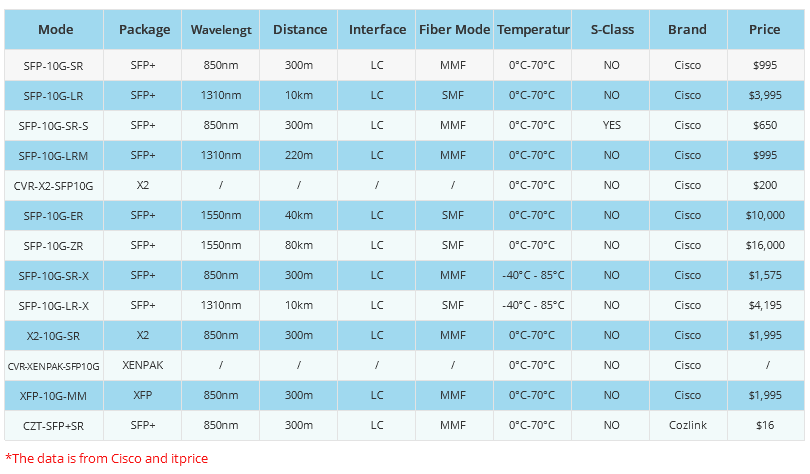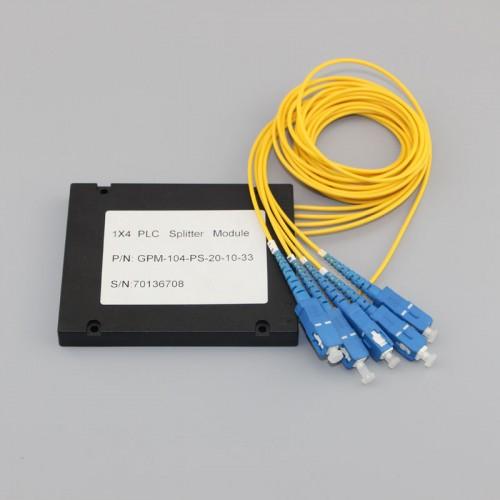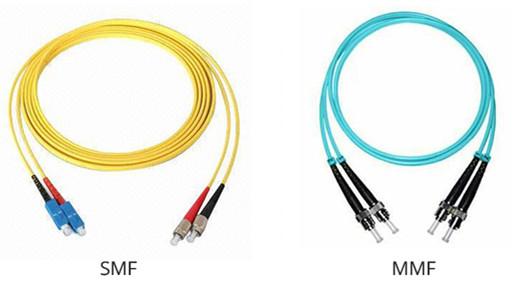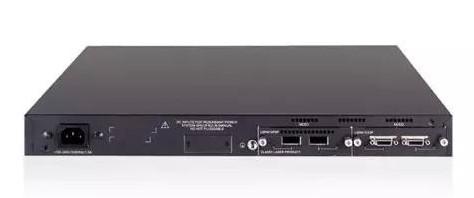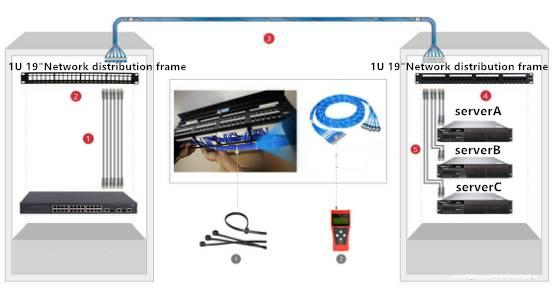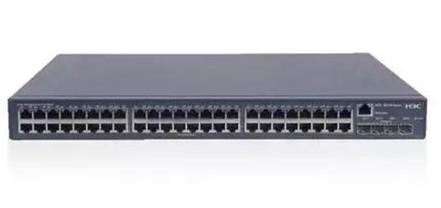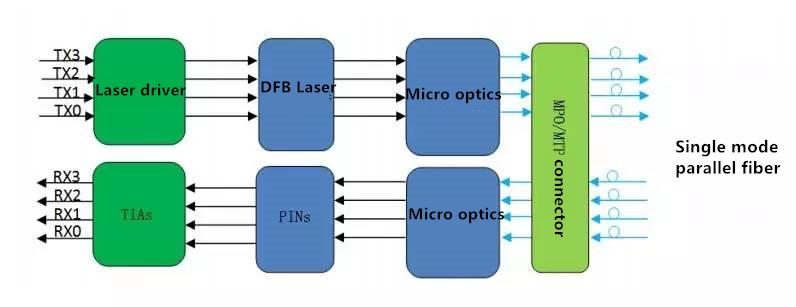- Related articles
- 7 tips for choosing network card
- Optical Transceivers for Cisco N3K-C3048TP-1GE Switch
- Optical Transceivers for Cisco WS-C3750E-24PD-E Switch
- Optical Transceivers for Cisco WS-C2960CG-8TC-L Switch
- All Cisco CVR-XENPAK-SFP10G's information (Specs, Datasheet PDF, Compatibility matrix)
- Optical Transceivers for Cisco N9K-C9372PX-E Switch
- The Things You Need to Know about 100GBASE-SR10 Ethernet Standards
- 100 Gigabit Ethernet Optical Transceiver Solution
- Optical Transceivers for Cisco IE-4000-16T4G-E Switch
- Optical Transceivers for Cisco WS-C4948-E Switch
Recommend tag
Performance and Application Analysis of 40G Optical Modules
2024-10-30
Performance and Application Analysis of 40G Optical Modules
With the upgrading of Internet applications, the demand for network bandwidth is increasing. The rapid development of interconnected data transmission cannot be separated from higher speed optical modules, such as 40G, 100G, 200G, 400G optical modules, etc. In this article, we will first provide a detailed introduction to the performance and application analysis of 40G optical modules.
Basic knowledge of 40G QSFP+optical module
The 40G QSFP+optical module complies with various standards such as SCSI, 40G Ethernet, 20G/40G Infiniband, etc. It has four data transmission channels, each with a transmission rate of about 10Gbps. Simultaneous transmission of the four channels can achieve a transmission rate of 40Gbps. This type of optical module mainly has two interfaces: LC and MTP/MPO (as shown in the figure below), which are respectively used in single-mode applications and multi-mode applications.
Fiber type: 40G optical modules typically use multimode fiber (MMF) or single-mode fiber (SMF) for transmission. Multimode fiber is typically suitable for short distance transmission, while single-mode fiber is suitable for long-distance transmission.
Transmission distance: The transmission distance of a 40G optical module can vary depending on the type of fiber used. In multimode fiber, a transmission distance of up to 400 meters can usually be achieved, while in single-mode fiber, the transmission distance can reach tens or hundreds of kilometers.
Optical module types: Common 40G optical module types include QSFP+, CFP, etc. The size and interface specifications of these modules vary to meet different application needs, and currently the mainstream is QSFP+packaging type.

Enterprise Network: 40G optical modules can be used in enterprise networks for connecting servers, connecting data centers and branch offices, and supporting high bandwidth applications such as video conferencing and large-scale data transmission.
High performance computing: The field of high-performance computing requires a large amount of computing and data processing capabilities, thus requiring high-speed data transmission. 40G optical modules can be used for node interconnection within high-performance computing clusters, achieving fast and reliable data exchange.
40G optical modules typically adopt a miniaturized design for easy installation and maintenance. They are usually compatible with the standard SFP28 interface, which is a miniaturized, hot swappable interface that can be easily connected to different types of fiber optic modules.
40G optical modules are widely used in data centers, enterprise networks, telecommunications operators, cloud computing, and other fields, providing high-speed, stable, and reliable data transmission services.
In summary, 40G optical modules have become indispensable high-speed data transmission equipment in data centers, enterprise networks, high-performance computing, and other fields due to their efficient transmission rates, diverse fiber support, flexible packaging types, and wide application scenarios.
With the upgrading of Internet applications, the demand for network bandwidth is increasing. The rapid development of interconnected data transmission cannot be separated from higher speed optical modules, such as 40G, 100G, 200G, 400G optical modules, etc. In this article, we will first provide a detailed introduction to the performance and application analysis of 40G optical modules.
Basic knowledge of 40G QSFP+optical module
The 40G QSFP+optical module complies with various standards such as SCSI, 40G Ethernet, 20G/40G Infiniband, etc. It has four data transmission channels, each with a transmission rate of about 10Gbps. Simultaneous transmission of the four channels can achieve a transmission rate of 40Gbps. This type of optical module mainly has two interfaces: LC and MTP/MPO (as shown in the figure below), which are respectively used in single-mode applications and multi-mode applications.
1、 Performance characteristics of 40G optical module
Transmission rate: The transmission rate of 40G optical modules is 40 Gbps, which enables them to transmit data with high bandwidth and is suitable for large capacity data transmission.Fiber type: 40G optical modules typically use multimode fiber (MMF) or single-mode fiber (SMF) for transmission. Multimode fiber is typically suitable for short distance transmission, while single-mode fiber is suitable for long-distance transmission.
Transmission distance: The transmission distance of a 40G optical module can vary depending on the type of fiber used. In multimode fiber, a transmission distance of up to 400 meters can usually be achieved, while in single-mode fiber, the transmission distance can reach tens or hundreds of kilometers.
Optical module types: Common 40G optical module types include QSFP+, CFP, etc. The size and interface specifications of these modules vary to meet different application needs, and currently the mainstream is QSFP+packaging type.

2、 Common application scenarios of 40G optical modules
Data Center: 40G optical modules can be used for server interconnection within data centers, interconnection between data centers, and connection to external networks.Enterprise Network: 40G optical modules can be used in enterprise networks for connecting servers, connecting data centers and branch offices, and supporting high bandwidth applications such as video conferencing and large-scale data transmission.
High performance computing: The field of high-performance computing requires a large amount of computing and data processing capabilities, thus requiring high-speed data transmission. 40G optical modules can be used for node interconnection within high-performance computing clusters, achieving fast and reliable data exchange.
3、 Other knowledge about 40G optical modules
40G optical modules typically use high-speed modulation methods and modems, such as 16QAM and 32QAM, to achieve high-speed data transmission. In addition, the 40G optical module also adopts some advanced technologies, such as adaptive optics and multi-channel transmission, to improve transmission efficiency and stability.40G optical modules typically adopt a miniaturized design for easy installation and maintenance. They are usually compatible with the standard SFP28 interface, which is a miniaturized, hot swappable interface that can be easily connected to different types of fiber optic modules.
40G optical modules are widely used in data centers, enterprise networks, telecommunications operators, cloud computing, and other fields, providing high-speed, stable, and reliable data transmission services.
In summary, 40G optical modules have become indispensable high-speed data transmission equipment in data centers, enterprise networks, high-performance computing, and other fields due to their efficient transmission rates, diverse fiber support, flexible packaging types, and wide application scenarios.

TECHNICAL SUPPORT
Get solutions or consultation from the technical team.




























































